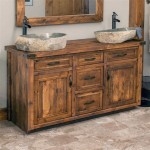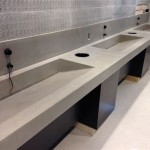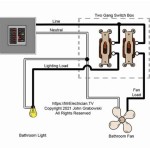Bathroom Water Supply Line Size
Understanding the correct water supply line size for bathroom fixtures is crucial for optimal performance and preventing potential plumbing issues. Choosing the wrong size can lead to low water pressure, slow filling times, and even water hammer. This article will explore the standard sizes used for bathroom water supply lines, the factors influencing the choice of size, and the various materials used in their construction.
Key Points:
Standard supply line sizes
Factors influencing supply line size
Materials used for supply lines
The most common sizes for bathroom water supply lines are 1/2 inch and 3/8 inch. Historically, 1/2 inch was the standard for all bathroom fixtures. However, with the advent of low-flow toilets and faucets, 3/8 inch supply lines have become increasingly prevalent, particularly for sinks, toilets, and bidets. Showerheads and bathtubs, requiring higher water volume, typically still utilize 1/2 inch supply lines.
The choice between 1/2 inch and 3/8 inch isn't arbitrary. Several factors influence the appropriate size, including the fixture type, the length of the supply line, and the water pressure in the main supply line. For instance, a long supply line may necessitate a larger diameter to compensate for friction loss, ensuring adequate water flow. Similarly, lower main water pressure may necessitate a larger diameter supply line.
Supply lines are commonly constructed from braided stainless steel, flexible PEX tubing, or rigid copper. Braided stainless steel offers flexibility and durability, making it a popular choice for easy installation in tight spaces. PEX tubing is another flexible option known for its resistance to kinks and corrosion. Rigid copper, while less flexible, provides a robust and reliable connection, though installation can be more challenging.
Key Points:
Importance of correct sizing
Measuring supply lines
Identifying existing supply lines
Incorrectly sized supply lines can lead to a range of problems. Undersized lines restrict water flow, resulting in weak pressure and extended filling times for sinks, tubs, and toilets. Oversized lines, while not as common a problem, can contribute to wasted water and potentially even higher water bills. Proper sizing ensures optimal fixture performance and efficient water usage.
Measuring a water supply line involves determining its outer diameter. This is typically done using a tape measure or calipers. It’s important to measure the outer diameter of the tubing itself and not the fittings on either end. Accurate measurement is crucial for selecting the correct replacement line or connecting new fixtures.
Identifying existing supply lines requires observation and sometimes a small amount of investigation. Braided stainless steel lines are easily identifiable by their woven metallic exterior. PEX tubing typically comes in various colors, often red for hot water and blue for cold, making it readily distinguishable. Copper lines have a distinct copper hue and are typically rigid. In cases where the line is concealed, consulting building plans or contacting a plumbing professional can be helpful.
Key Points:
Local codes and regulations
Working with different valve types
Connecting supply lines
Local plumbing codes and regulations often dictate specific requirements for water supply line sizes and materials. These regulations are essential for ensuring safe and compliant plumbing installations. Always consult local codes before undertaking any plumbing projects to ensure compliance and avoid potential issues.
Different valve types, such as angle stops, straight stops, and shut-off valves, are used in conjunction with water supply lines. Angle stops, commonly used for toilets and sinks, allow for a 90-degree turn in the supply line. Straight stops provide a straight connection. Shut-off valves are essential for controlling the water supply to individual fixtures or sections of plumbing. Understanding the function and compatibility of these valves is crucial for proper installation.
Connecting water supply lines involves using compression fittings, which tighten around the supply line and the valve. These fittings require careful tightening to prevent leaks. Over-tightening can damage the fitting or the supply line, while under-tightening can lead to leaks. Using appropriate tools, such as an adjustable wrench, and following manufacturer instructions are essential for ensuring a secure and leak-free connection. For copper supply lines, soldering is often required, demanding specific skills and safety precautions.
Choosing the appropriate bathroom water supply line size involves considering factors like fixture requirements, water pressure, and line length. Understanding the different materials available and adhering to local plumbing codes ensures a functional and compliant plumbing system. Accurate measurement and proper connection techniques are vital for preventing leaks and optimizing fixture performance. Consulting a qualified plumber is recommended for complex installations or when in doubt about any aspect of the process.

What Size Are Faucet Supply Lines For All Faucets Tck

Domestic Water Piping Design Guide How To Size And Select

Pipes And Home Plumbing For Diy Plumbers

Pipes And Home Plumbing For Diy Plumbers

How To Size Your Water Lines Pex Or Copper Williams Plumbing

Pipes And Home Plumbing For Diy Plumbers

Have The Correct Water Supply Line Size 3 Factors

What Size Are Faucet Supply Lines For All Faucets Tck

Domestic Water Piping Design Guide How To Size And Select

How To Determine Suitable Pipe Sizes For Water Distribution In Buildings
Related Posts







